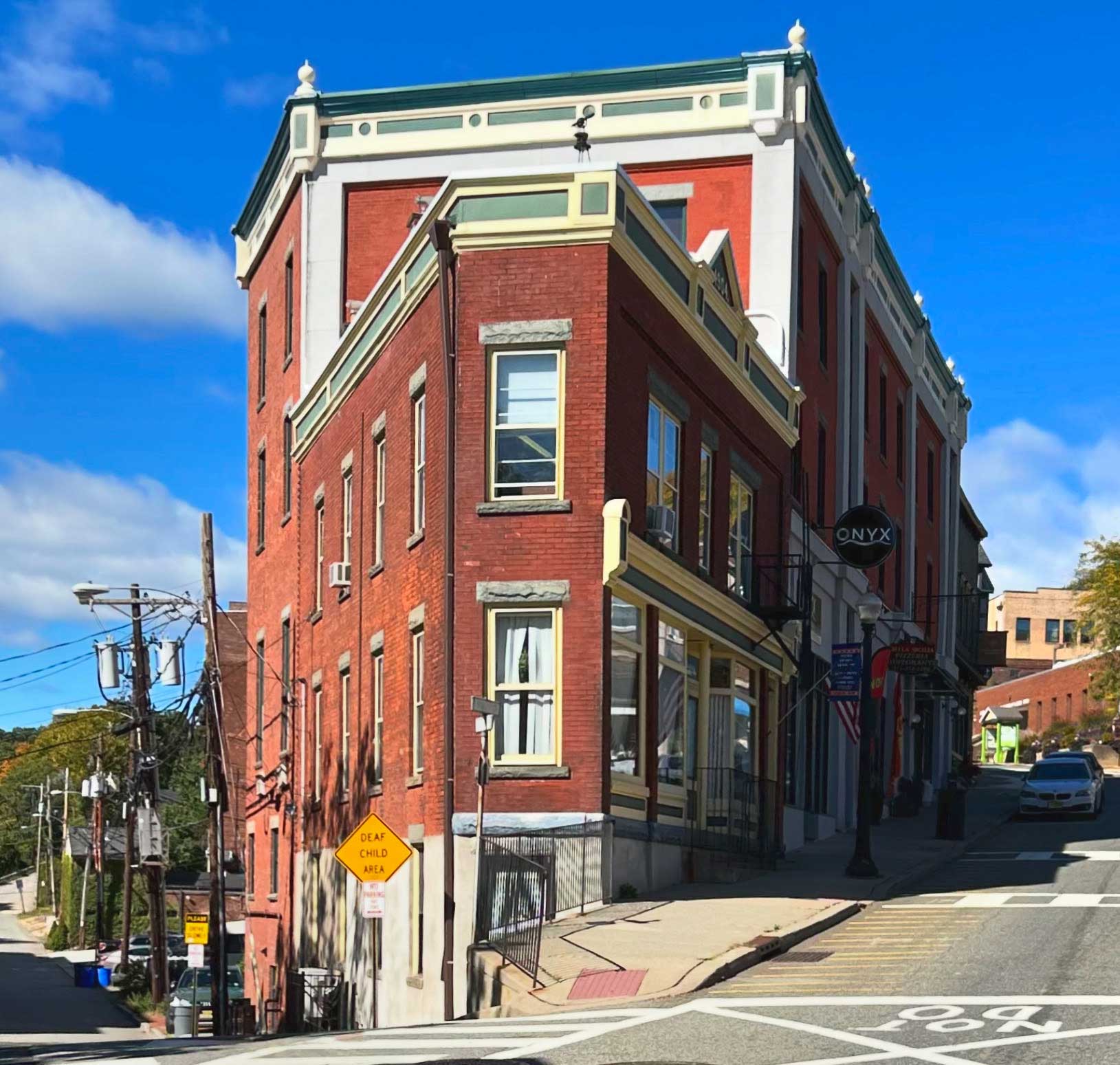
The first mistake I made during my visit to Boonton was admitting to artist Holly Suzanne Rader that I had just had a Starbucks latté (I bought one while waiting for a connecting train in Summit.) In a town with three independent coffee shops within a half-mile stretch of Main Street, the mention of the corporate chain is forbidden. Supporting local businesses is a way of life in this mountaintop village, something that comes naturally when business owners are good at what they do. Fortunately, I had the whole day to redeem myself, spending the day at local restaurants, specialty shops, and the longest-standing coffee house in Boonton’s historic downtown.
HOLLYWOULD STUDIOS, 414 MAIN STREET
Holly Suzanne Rader, the owner of Hollywould Studios, is one of the newest additions in town. Her gallery is part showroom, part classroom for those wishing to learn her Rauschenberg-meets-Warhol collage style. In a way, she was a great person to begin the day with, seeing the town through the eyes of a newcomer from Bristol, Tennessee. For her, Boonton is the best of both worlds. A small town with an “edge,” she said.
“I’m not a big city girl,” Radar said. “I used to walk to downtown Bristol when I was growing up – my mom had an antique shop there.”
The artist’s long and winding road to Boonton began shortly after moving to Montville with her husband – the owner of Silk City Distillers in Wayne – and two children. Last year, Boonton saw a slew of new businesses open, including Radar’s Gallery, a cocktail bar Ombra, Catfight Coffee, and a record shop Hidden Tracks, filling out the few remaining storefronts. In a time when many downtowns in New Jersey continue to struggle to find the right formula to draw businesses, Boonton has the opposite problem – not enough space.
Radar took over the space that once belonged to artist David Pucciarelli. Boonton has a long history as an art colony. Often one artist will succeed another in the same storefront.
BROADFOOT & BROADFOOT, 819 MAIN STREET
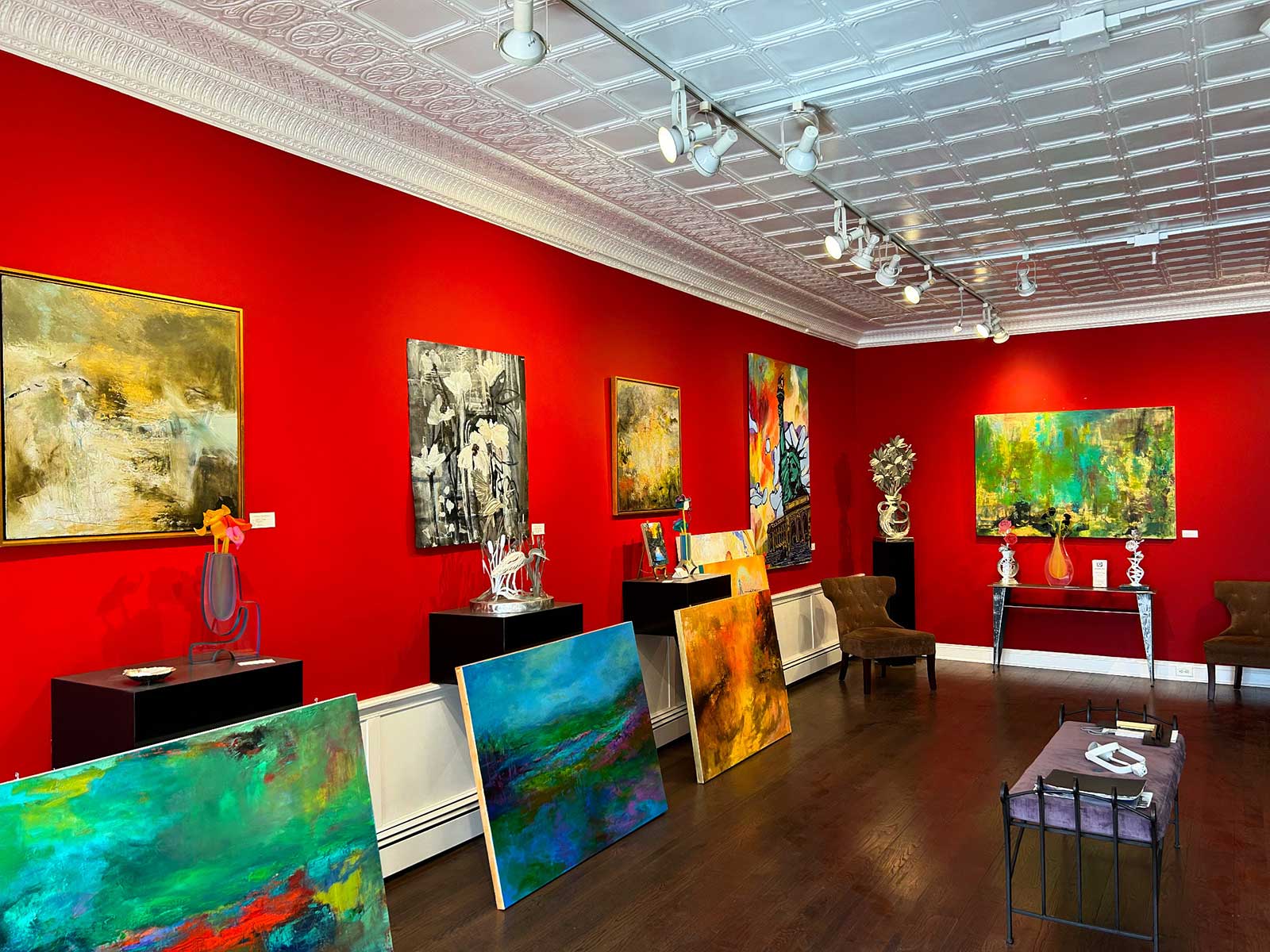
One gallery owner who has outlasted them all is Scott Broadfoot, who moved to Boonton 33 years ago. Broadfoot, pivoting from a modeling career into the contemporary art world, came to town when it was largely antique shops.
“Boonton goes up and down, up and down, but in the last three years it’s really taken a turn for the better,” he said. “Today, there are eight galleries, along with shops that have galleries in them, but we all do something different.”
The variety of art smacks you in the face, whether it’s the murals or public art installations that were the brainchild of Paul Jach and Kristy Brucale Jach of Boonton Arts. The duo is also behind nearby Speakeasy Art Gallery, where Radar’s nine-year-old is taking drawing lessons.
The health of the arts community is always the best bellwether of a good economy. Another sign that business is once again booming is the ongoing renovations happening up and down Main Street, including at Broadfoot’s building which is undergoing a $280,000 improvement. It includes more than just a facelift. It will bring another, much needed, retail storefront and two luxury apartments upstairs.
THE MORRIS CANAL
Boonton’s history began as an important stop along the Morris Canal. This waterway was used to traffic goods, such as coal and iron, back and forth from as far away as Jersey City. Remnants of the canal, which was made obsolete by the advent of rail travel, can still be seen in Grace Lord Park, an important source of tourism for canal enthusiasts.
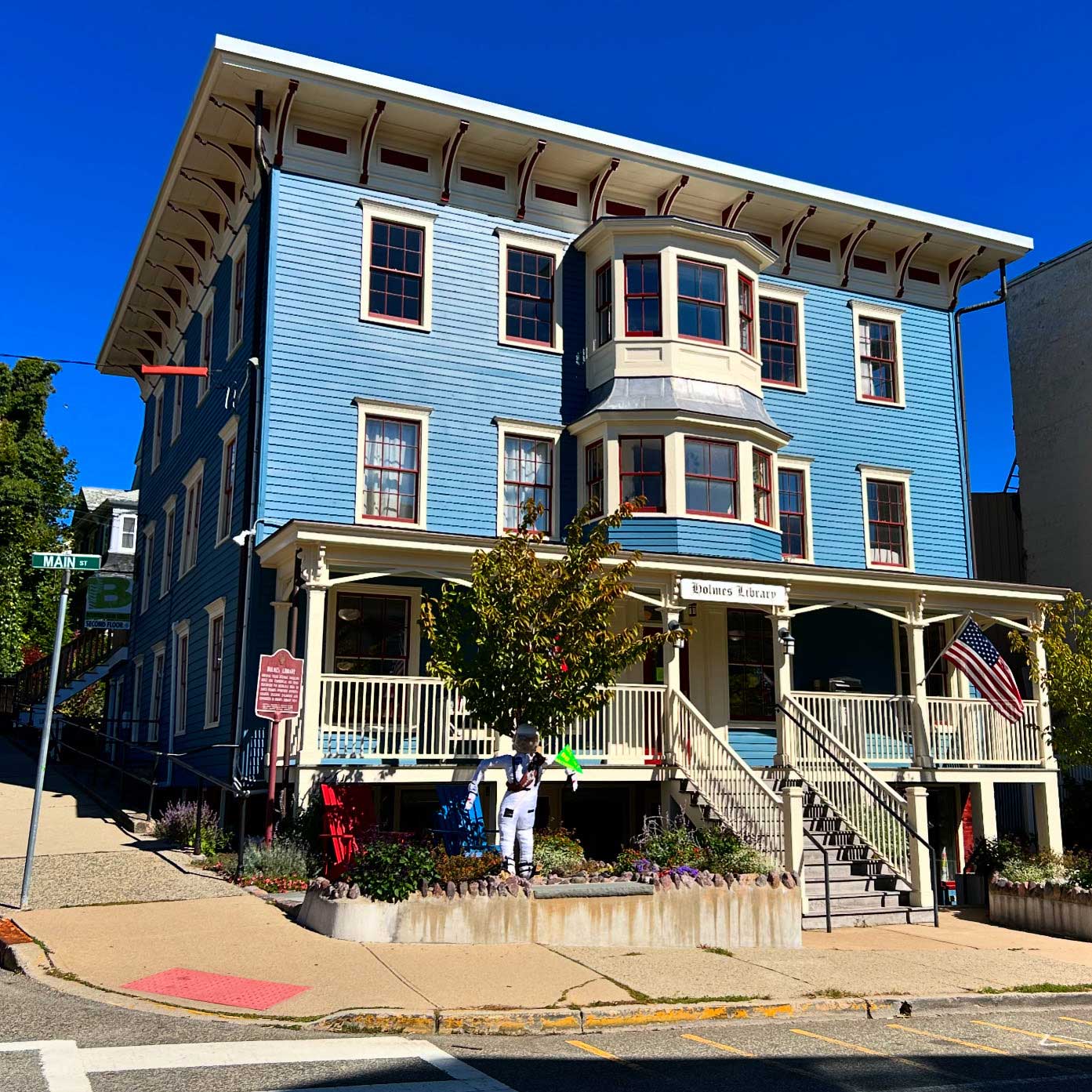
This history is the reason most of the buildings located within the downtown historic district were built in the 19th century, many connected to the canal in some way. Residences, such as the one at 115 Church Street, were home to English ironworkers. Others, at 127 and 131 Church Street, were built by the wealthy Iron Company owners and their children.
History buffs can spend much of the day in Grace Lord Park or walking in the historic district, which is listed on the National Register. Inside the public library, which is housed in an 1849 building, you can find an old map of Boonton from 1857, when the town had only 1,600 residents. There you can see the location of the old iron mill, the canal, and the historic downtown that was just beginning to sprout up.
CHILI WILLIE’S, 702 MAIN STREET
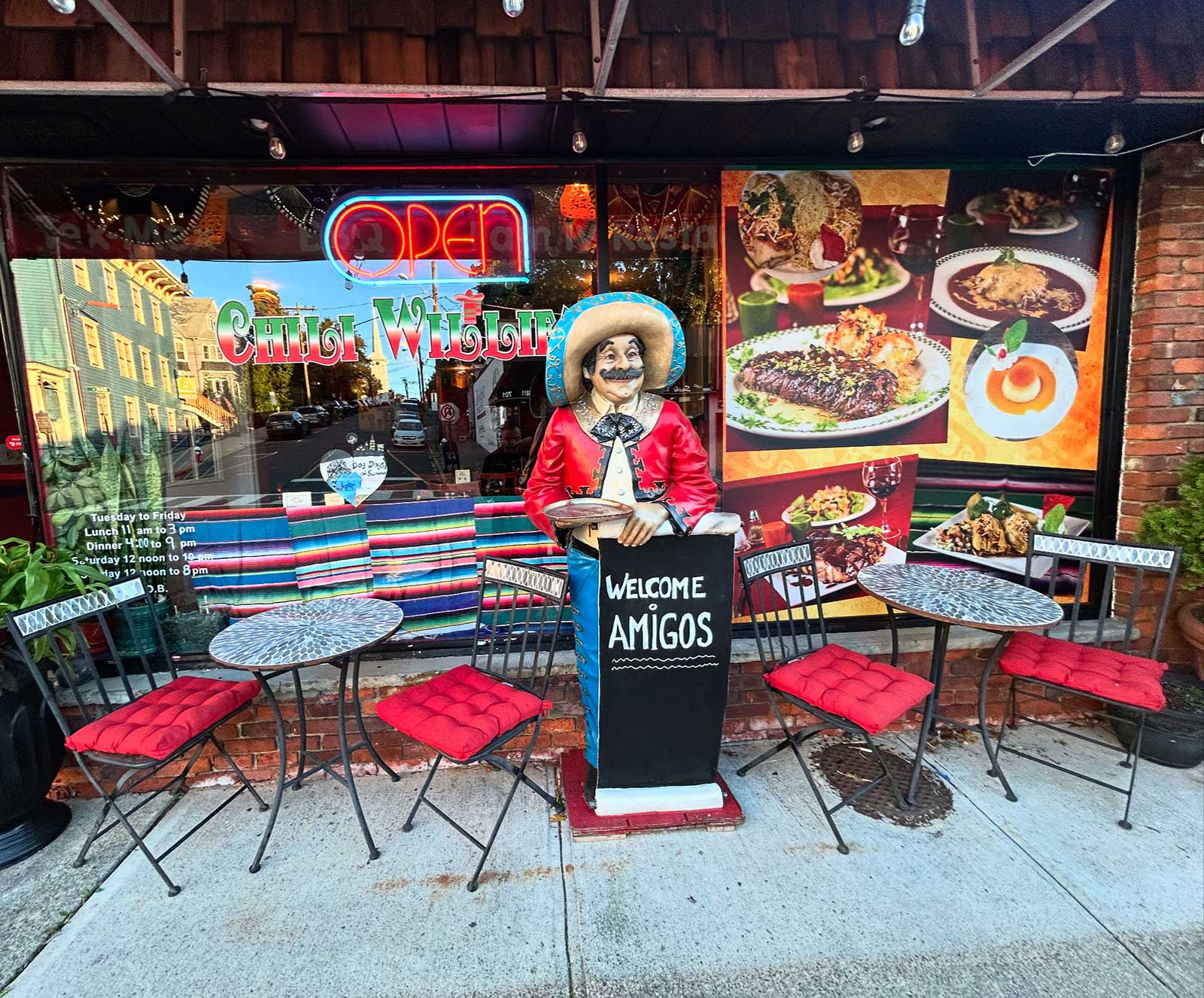
The hills of Boonton, though it makes for a rather interesting streetscape with buildings teetering on sharp inclines, can easily tire you out. If you spend enough time here you’ll need to rest and refuel. As you stroll along Main Street trying to decide where to eat next, take note of the sheer variety of cuisines. Earlier that day, I had stopped into Boonton Sushi House, and ordered the $12 tempura lunch special. It was a hard decision to make because within walking distance are Uzbeki, Mediterranean, Thai, Jamaican, and Italian restaurants. I remembered something Broadfoot’s partner, Sean, said to me that rings true.
“You can eat around the world,” he said.
There is more than one Mexican restaurant downtown, but a standout is Chili Willie’s, which has been around for more than two decades. On the dining room wall is a framed review from the Star-Ledger in 2005. The writer raves about owner Jackie Pagan and her welcoming demeanor – nothing has changed. For meat eaters, I’ve heard the pork chops are outstanding. I was happy to find a vegetarian menu and ordered a burrito. The vegetables are fresh and the portions require you to take some back home with you.
SINOFILIA TEA SHOP, 805 MAIN STREET
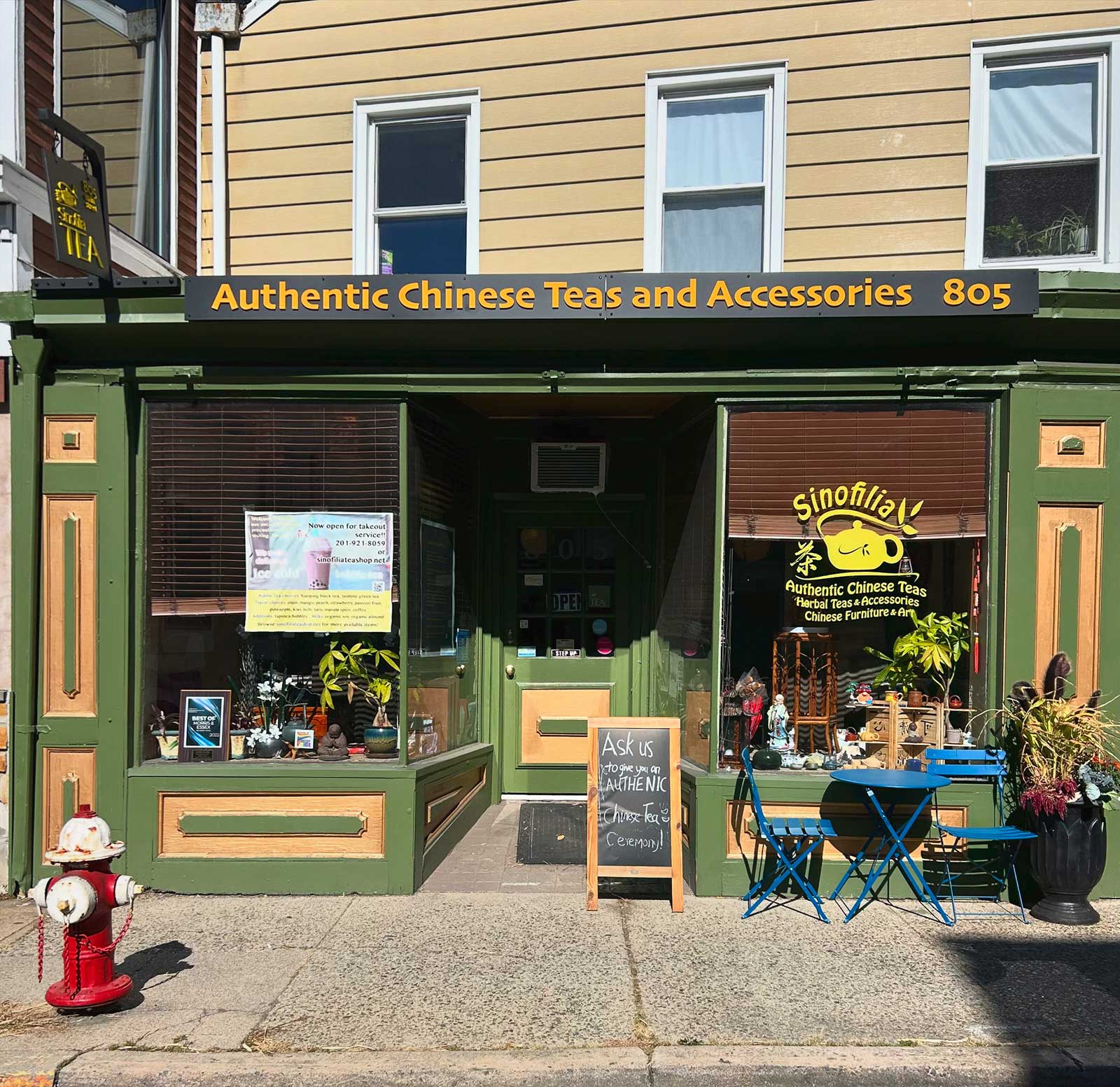
When I think of unusual shops that make Boonton so special, Sinofilia Tea Shop comes to mind. When you enter, the stress of the world disappears. The good energy that permeates the retail space is thanks to the meditation of owner Feng Xiao Liu, a former Buddhist nun from Hubei, China. After leaving the ascetic life behind, she came to Boonton with her photographer husband in 2013 to escape both the noise and gentrification of Jersey City.
“I went to China for a month to make connections to buy tea,” Liu said. “When I came back, I saw in the window of this shop said “For Rent” – I guess, it was meant to be.”
Liu said when she moved into the storefront in 2015, most of the town was “dead.” It was still suffering the impacts of the 2008 economic downturn. But Boonton Coffee Company’s opening in 2016 lit a spark, proving how important a coffee house can be to downtown revival.
The town’s success, Liu said, is that it attracts business owners who are passionate about their craft – whether it’s crystal sellers or vintage record aficionados.
Liu also talked about the struggles she faced during the recent pandemic, which she survived by selling bubble tea. But her real passion is traditional teas, selling more than 60 kinds, such as oolong and pu-erh. All the tea on her shelves is imported from her motherland. The handmade clay pots are from Yixing, China. For the immersive experience, visitors can book an hour-long tea ceremony sampling different regional specialties that costs $120 for four people.
BOONTON COFFEE COMPANY, 602 MAIN STREET
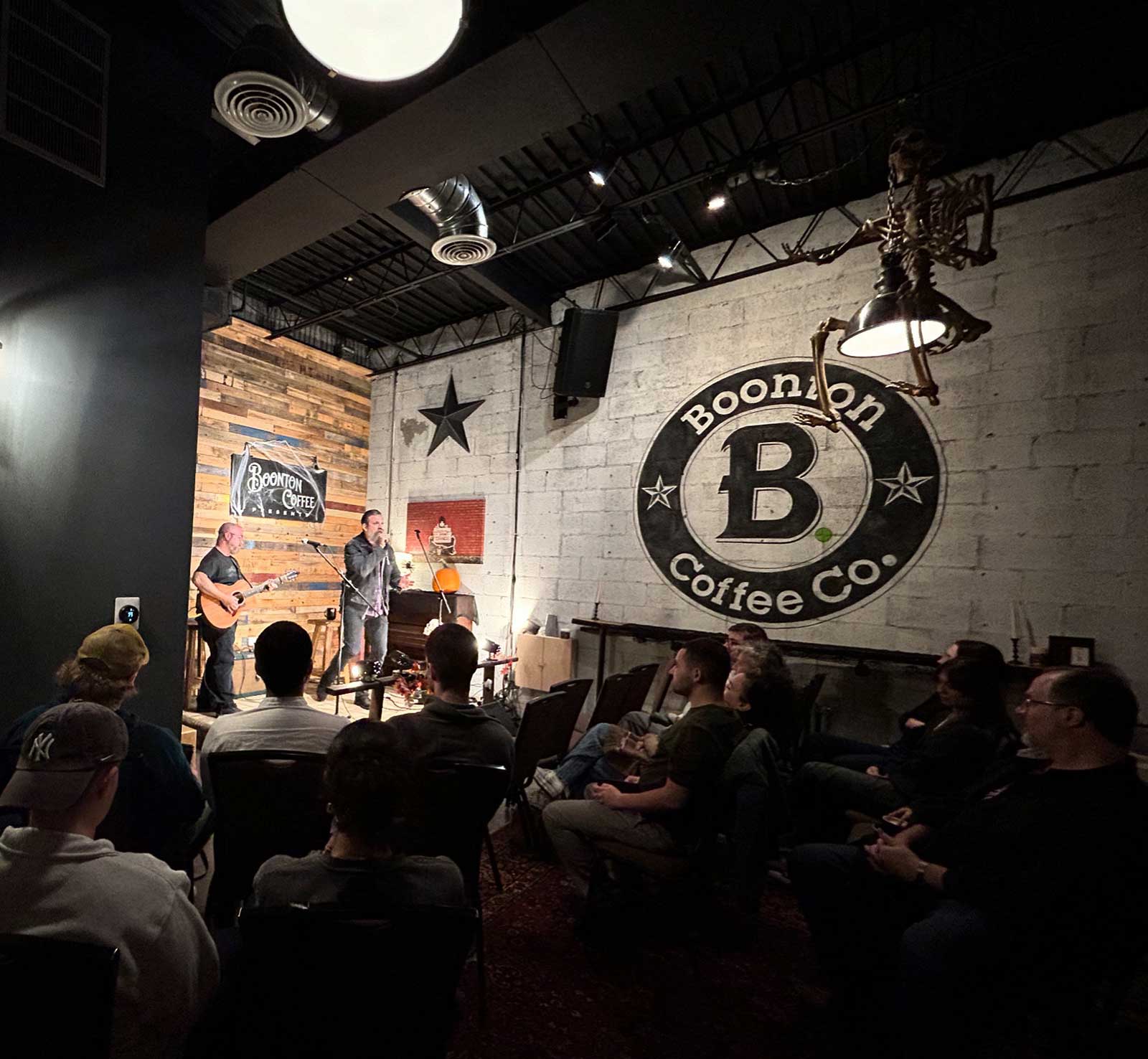
After dinner, I headed over to Boonton Coffee Company to while away some time before watching the open mic at 6:30 p.m. Full disclosure: I had been to Boonton Coffee Company once before. In August, on my way home from St. Hubert’s Chapel, which you can read about here, my friend and I made a pit stop and stumbled on this small, charming town. As I would find out, that’s how many new residents discover Boonton, sort of by accident. The row of trendy shops, galleries, and food spots all clustered around this historic downtown neighborhood really leaves a lasting impression. Others have said the same.
“More times than I can remember we’ve spoken to customers who say, believe it or not, we came to town and visited your coffee shop and decided to move to town,” said Frank McDonald, owner of Boonton Coffee.
McDonald, born in Stoneyburn, Scotland, moved to Boonton by way of Morristown, where he landed a corporate job. In 2016, tired of the nine-to-five drudgery, he indulged his longtime passion for roasting coffee.
“We’re really about coffee, buying the best beans and roasting it the best we can,” McDonald said. “Everything else is secondary.”
At 6:30 p.m., visitors toting various instruments began to convene in the coffee shop’s intimate performance area. About ten musicians signed up for the open mic that night, most performing two numbers. The evening was a mix of seasoned local performers like Eddie Kamenitzer and Craig Cirinelli trying out new material alongside rawer talent just getting a feel for live performance. It was a supportive space.
McDonald said he doesn’t earn a dime from hosting community events like this. However, the shop does host a paid series called Boonton Coffee Presents, which Cirinelli hosts. It draws national acts, such as the Spin Doctors’ Chris Barron and the Verve Pipe’s Brian Vander Ark.
I had to leave the open mic a bit early to catch a 7:40 p.m. train. As I walked to the station, I noticed the lights on the marquee at the Darress Theater, a historic venue that is undergoing a renovation, were turned on and I imagined the not-too-distant future when concertgoers will spill out of the theater and descend onto the local restaurants and bars like Ombra and Johnnies Tavern. Boonton already has a good thing going but the opening of a concert hall, which the town bought in 2020, is just the thing to make it an all-day destination.